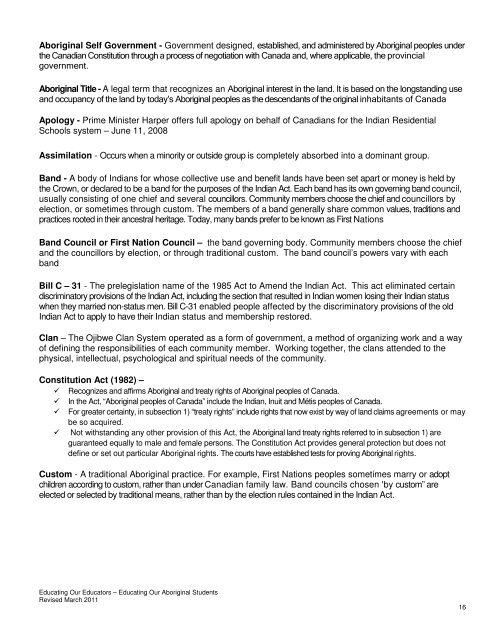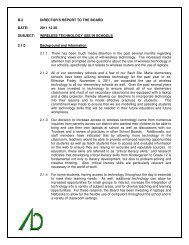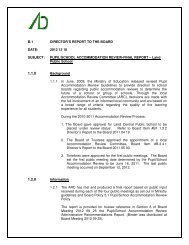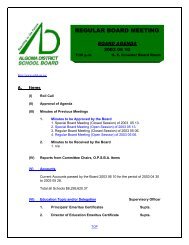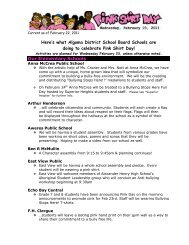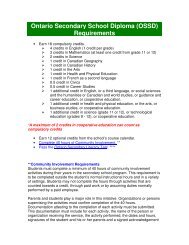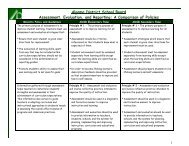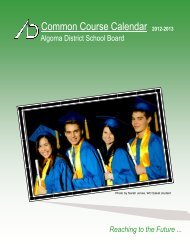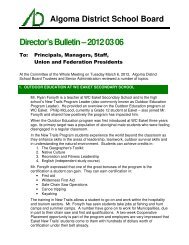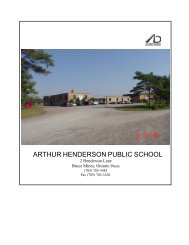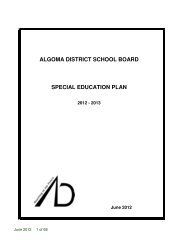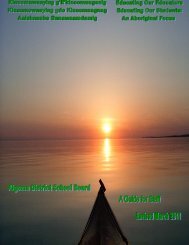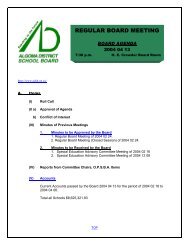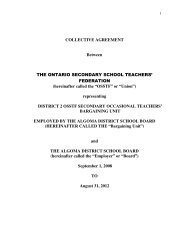Educating Our Educators Guide for Staff - Algoma District School ...
Educating Our Educators Guide for Staff - Algoma District School ...
Educating Our Educators Guide for Staff - Algoma District School ...
- No tags were found...
Create successful ePaper yourself
Turn your PDF publications into a flip-book with our unique Google optimized e-Paper software.
Aboriginal Self Government - Government designed, established, and administered by Aboriginal peoples underthe Canadian Constitution through a process of negotiation with Canada and, where applicable, the provincialgovernment.Aboriginal Title - A legal term that recognizes an Aboriginal interest in the land. It is based on the longstanding useand occupancy of the land by today’s Aboriginal peoples as the descendants of the original inhabitants of CanadaApology - Prime Minister Harper offers full apology on behalf of Canadians <strong>for</strong> the Indian Residential<strong>School</strong>s system – June 11, 2008Assimilation - Occurs when a minority or outside group is completely absorbed into a dominant group.Band - A body of Indians <strong>for</strong> whose collective use and benefit lands have been set apart or money is held bythe Crown, or declared to be a band <strong>for</strong> the purposes of the Indian Act. Each band has its own governing band council,usually consisting of one chief and several councillors. Community members choose the chief and councillors byelection, or sometimes through custom. The members of a band generally share common values, traditions andpractices rooted in their ancestral heritage. Today, many bands prefer to be known as First NationsBand Council or First Nation Council – the band governing body. Community members choose the chiefand the councillors by election, or through traditional custom. The band council’s powers vary with eachbandBill C – 31 - The prelegislation name of the 1985 Act to Amend the Indian Act. This act eliminated certaindiscriminatory provisions of the Indian Act, including the section that resulted in Indian women losing their Indian statuswhen they married non-status men. Bill C-31 enabled people affected by the discriminatory provisions of the oldIndian Act to apply to have their Indian status and membership restored.Clan – The Ojibwe Clan System operated as a <strong>for</strong>m of government, a method of organizing work and a wayof defining the responsibilities of each community member. Working together, the clans attended to thephysical, intellectual, psychological and spiritual needs of the community.Constitution Act (1982) – Recognizes and affirms Aboriginal and treaty rights of Aboriginal peoples of Canada. In the Act, “Aboriginal peoples of Canada” include the Indian, Inuit and Métis peoples of Canada. For greater certainty, in subsection 1) “treaty rights” include rights that now exist by way of land claims agreements or maybe so acquired. Not withstanding any other provision of this Act, the Aboriginal land treaty rights referred to in subsection 1) areguaranteed equally to male and female persons. The Constitution Act provides general protection but does notdefine or set out particular Aboriginal rights. The courts have established tests <strong>for</strong> proving Aboriginal rights.Custom - A traditional Aboriginal practice. For example, First Nations peoples sometimes marry or adoptchildren according to custom, rather than under Canadian family law. Band councils chosen 'by custom” areelected or selected by traditional means, rather than by the election rules contained in the Indian Act.<strong>Educating</strong> <strong>Our</strong> <strong>Educators</strong> – <strong>Educating</strong> <strong>Our</strong> Aboriginal StudentsRevised March 201116


